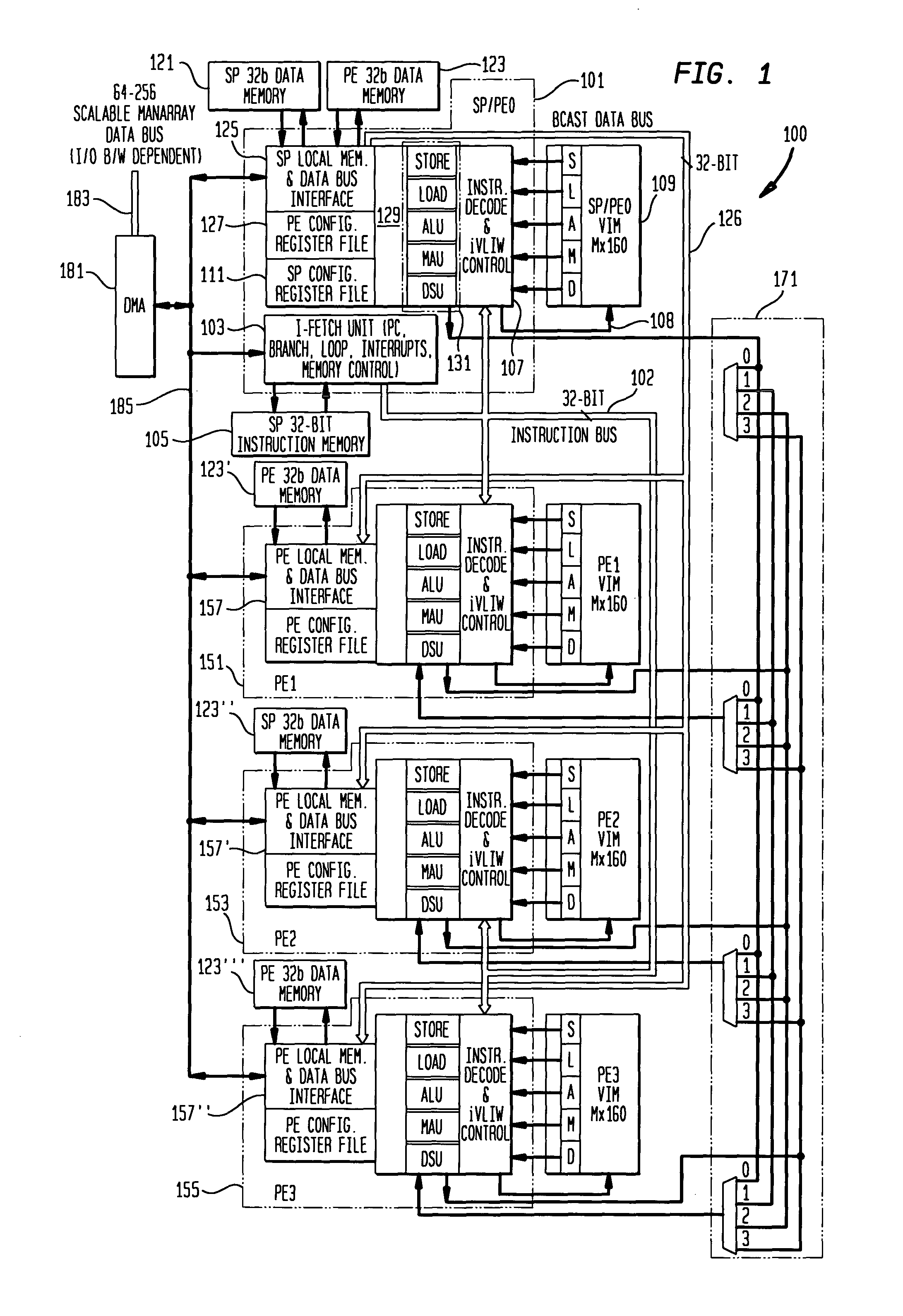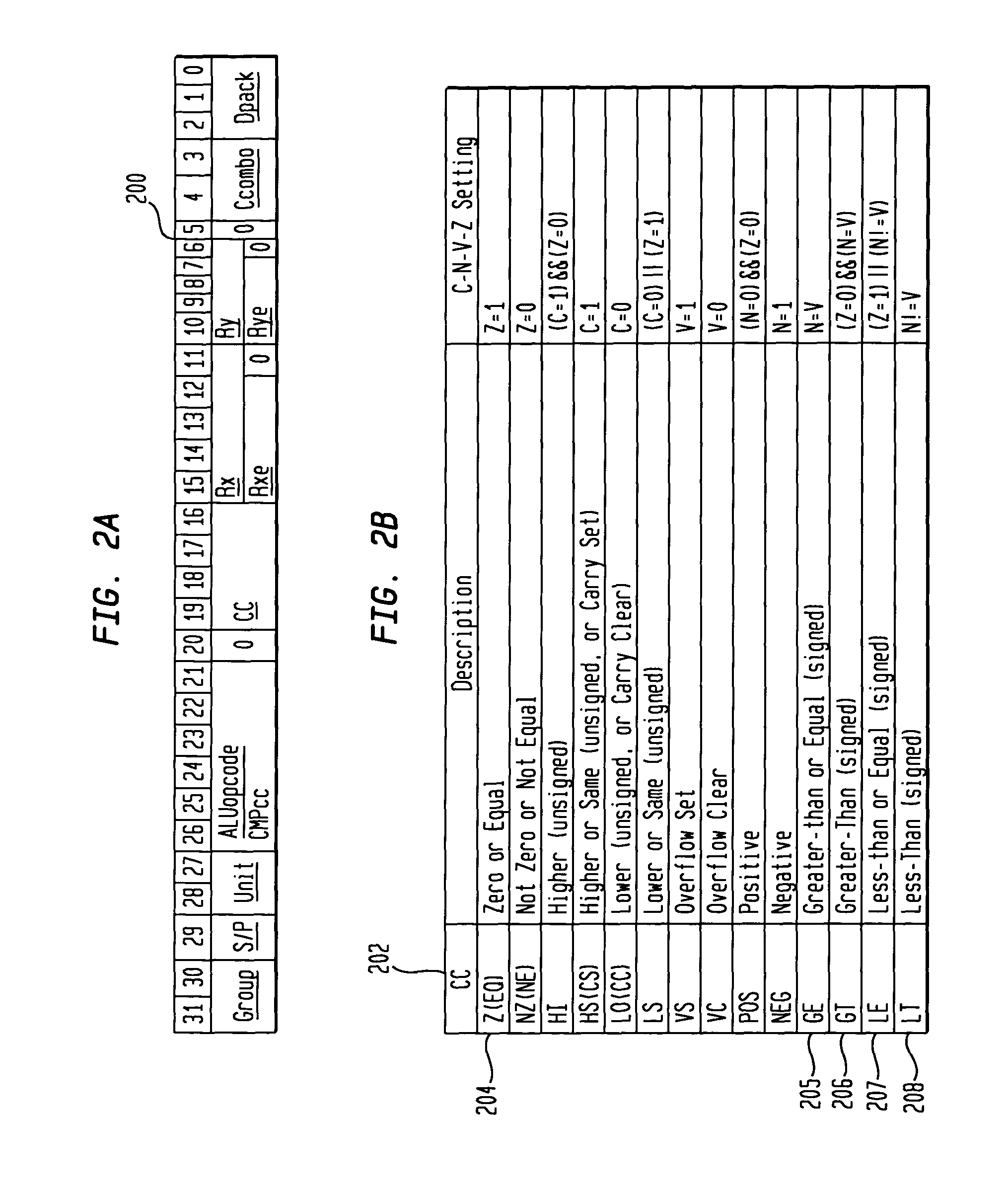Methods and apparatus to support conditional execution in a VLIW-based array processor with subword execution
a technology of array processor and conditional execution, applied in the field of digital processing, can solve the problems of reducing the performance effect of each branch required, without restricting functional capabilities, etc., and achieve the effects of less costly, easy communication, and convenient transfer
- Summary
- Abstract
- Description
- Claims
- Application Information
AI Technical Summary
Benefits of technology
Problems solved by technology
Method used
Image
Examples
Embodiment Construction
[0027]Further details of a presently preferred ManArray architecture for use in conjunction with the present invention are found in U.S. patent application Ser. No. 08 / 885,310 filed Jun. 30, 1997, U.S. patent application Ser. No. 08 / 949,122 filed Oct. 10, 1997, U.S. patent application Ser. No. 09 / 169,255 filed Oct. 9, 1998, U.S. patent application Ser. No. 09 / 169,256 filed Oct. 9, 1998, U.S. patent application Ser. No. 09 / 169,072 filed Oct. 9, 1998, U.S. patent application Ser. No. 09 / 187,539 filed Nov. 6, 1998, U.S. patent application Ser. No. 09 / 205,558 filed Dec. 4, 1998, U.S. patent application Ser. No. 09 / 215,081 filed Dec. 18, 1998 and U.S. patent application Ser. No. 09 / 228,374 filed Jan. 12, 1999 and entitled “Methods and Apparatus to Dynamically Reconfigure the Instruction Pipeline of an Indirect Very Long Instruction Word Scalable Processor”, Provisional Application Ser. No. 60 / 071,248 entitled “Methods and Apparatus to Dynamically Expand the Instruction Pipeline of a Very...
PUM
 Login to View More
Login to View More Abstract
Description
Claims
Application Information
 Login to View More
Login to View More - R&D
- Intellectual Property
- Life Sciences
- Materials
- Tech Scout
- Unparalleled Data Quality
- Higher Quality Content
- 60% Fewer Hallucinations
Browse by: Latest US Patents, China's latest patents, Technical Efficacy Thesaurus, Application Domain, Technology Topic, Popular Technical Reports.
© 2025 PatSnap. All rights reserved.Legal|Privacy policy|Modern Slavery Act Transparency Statement|Sitemap|About US| Contact US: help@patsnap.com



